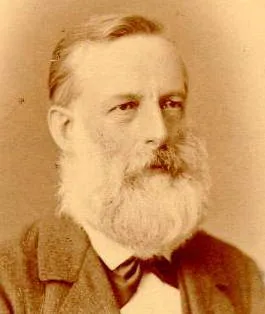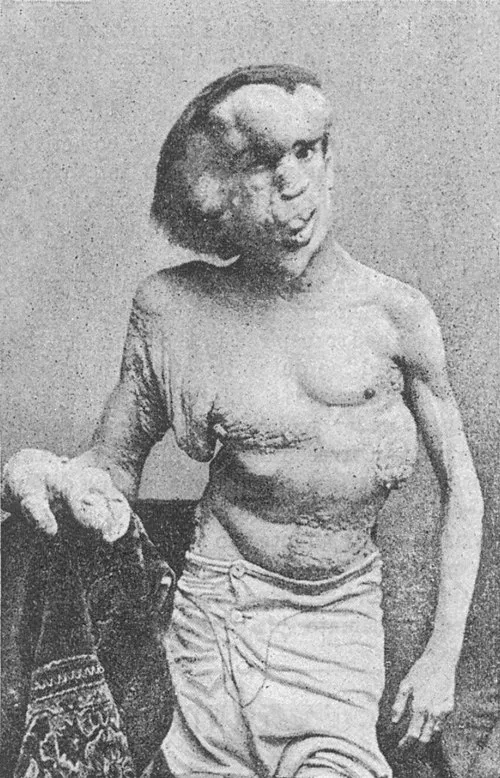
Name: Julius Lothar Meyer
Nationality: German
Profession: Chemist
Born: 1830
Died: 1895
Notable Contributions: Developed the periodic table of elements.
1895 – Julius Lothar Meyer, German chemist (b. 1830)
Julius Lothar Meyer was not just a name in the annals of chemistry; he was a pioneer whose contributions shaped the very foundations of modern science. Born in 1830, Meyer’s early life was marked by curiosity and a thirst for knowledge that would eventually lead him down the path of chemistry. However, his journey was fraught with challenges that would test his resolve and brilliance.
Raised in a family that valued education, young Julius found himself drawn to the natural sciences. He studied at various prestigious institutions, including the University of Tübingen, where he dabbled in physics and medicine before settling on chemistry a decision that would define his career. Ironically, despite Germany's burgeoning reputation as a scientific powerhouse during this era, many chemists struggled to find recognition for their work amidst fierce competition.
Meyer initially pursued an academic career but soon found that true innovation lay beyond traditional classrooms. His first significant breakthrough came during his time at the University of Würzburg when he began formulating ideas about elemental relationships based on atomic weight an idea ahead of its time. His meticulous nature led him to develop one of the earliest versions of what we now recognize as the periodic table a visual representation that organized elements based on their properties and atomic masses.
Historians recount that while Dmitri Mendeleev is often credited with creating the periodic table we know today, Meyer's version arrived almost simultaneously but received less attention due to timing and geographical circumstances. Perhaps one reason for this disparity lies in Meyer's publication delays; he released his findings shortly after Mendeleev's acclaimed work made headlines across Europe. Despite this unfortunate twist, Meyer's contributions were critical in establishing patterns within chemical elements his graph plotting atomic volumes against atomic weights remains an enduring legacy.
The 1860s marked pivotal years for Meyer; it was during these times he began giving lectures and publishing papers outlining his discoveries about valence the concept describing how atoms bond together. In these lectures, he captivated audiences with vivid descriptions about atoms working like dancers at a grand ball each waiting for their turn to connect harmoniously with others! This artistic metaphor perhaps helped demystify complex concepts for many students who struggled with scientific rigidity.
Yet success did not come without its sacrifices... By relentlessly pursuing research over personal life commitments, Meyer faced several setbacks throughout his career one being a debilitating illness that forced him to take breaks from teaching duties! Who knows how much further advanced chemistry might have been had he not faced such trials? Nevertheless, perseverance defined Meyer’s character; rather than succumbing to despair from health issues or obscurity within academia…he soldiered on!
Meyer eventually secured positions at various universities including universities like Karlsruhe where he served as professor and continued contributing insights into both organic and inorganic compounds alike! Notably influential were his studies involving gases he sought deeper understanding regarding gas behavior under different conditions which ultimately laid groundwork paving paths toward advances made by future scientists such as Van der Waals!
As fate would have it though…Meyers’ accolades remained largely unrecognized until decades later posthumously when chemists finally acknowledged brilliance behind foundations they built upon! In fact: Some argue only through hindsight can we truly appreciate profound impact certain individuals had shaping scientific discourse around essential elements they were essentially unsung heroes hidden beneath giants' shadows...
However ironic it may seem: While many people may not recall Julius Lothar Meyer today even amongst ardent fans dedicated entirely towards chemistry they might unknowingly interact daily with concepts originating from principles derived through collective works contributed therein by him alongside contemporaries like Mendeleev!
The late nineteenth century heralded changes beyond mere academia the rise of industrialization sparked increased demand amongst chemists working tirelessly developing synthetic materials capable addressing pressing societal needs ranging everything from agricultural fertilizers aiding crops thrive more efficiently farming practices towards producing dyes revolutionizing textile industries transforming economies entirely! It is likely these socio-economic shifts inspired continued exploration within fields surrounding chemical engineering further elevating profiles associated once marginalized figures such as themselves who dared challenge conventional norms prevailing then...
Looking back on his life today serves reminder twofold: Firstly to appreciate profound interconnectedness shared across disciplines constantly evolving secondarily to reflect upon those trails blazed long ago whilst endeavoring forge new routes forward ourselves leading discovery uncovering myriad possibilities await curious minds willing venture forth engage boldly explore unknown horizons awaiting embrace each moment gift we’re given live create learning something greater collective future generations yet arise touch lives profoundly...




